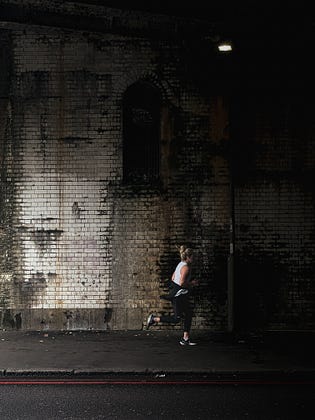I rarely go back to London. It was my home for almost 40 years, bar a few short stints living in rural Wales. But now that my father has moved away I have no driving reason to go.
The last time I was in the city for any length was when my father broke his knee and needed someone to house/dog sit while he was stuck in the twilight zone of the NHS in crisis. It took five days to get him out of a hospital corridor, onto a ward and in front of a physio for assessment. Once he was on the ward, it took less than an hour for him to be assessed and discharged. Such is the state of the NHS.
I stayed until he was able to manage the stairs alone, and found myself with time and need to explore a part of London I hadn’t lived in since I was ten years old. Back then, I never really knew that part of the city. I knew the streets around home and school. I knew routes to friends’ houses and the nearby shops. Even as an adult living and working in London, I never knew this area well.
This time, we were in the midst of a Covid crisis. I avoided public transport for fear of bringing something home to my dad. Instead, in dire need of space and sanity, I walked. I walked for miles, finding pockets of the familiar and creating a mental map of places where, as a child, I’d been delivered, out of context, by my parents. Places I’d known for work, but never explored the spaces between.
Those walks took me through parts of London that are conventionally photogenic. The Thames. Parks. Shopping streets. All very different and very much cleaner and more gentrified than they had been when I was a kid. They also took me through snippets more akin to the London of the 70s and 80s. Gritty. Urban. Stained.
I’ve always had an affection for the overlooked spaces where rust and dust accumulate. This underpass near Clapham Junction was one such space—a brief interlude of undisturbed grime that had slipped the attention of the gentrification juggernaut.
Posted as part of the Nordic Lens photo challenge on the theme “Illuminate”.


